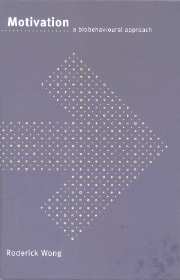Book contents
- Frontmatter
- Contents
- Preface and acknowledgements
- 1 Introduction and perspective
- 2 Mating and reproductive activities
- 3 Parental/maternal activities
- 4 Feeding activities
- 5 Food selection
- 6 Drinking activities
- 7 Stimulus seeking and exploratory activities
- 8 Aversive motivation systems: fear, frustration and aggression
- 9 Social motivation: attachment and altruism
- 10 Conclusions and retrospective
- References
- Author index
- Subject index
8 - Aversive motivation systems: fear, frustration and aggression
Published online by Cambridge University Press: 10 December 2009
- Frontmatter
- Contents
- Preface and acknowledgements
- 1 Introduction and perspective
- 2 Mating and reproductive activities
- 3 Parental/maternal activities
- 4 Feeding activities
- 5 Food selection
- 6 Drinking activities
- 7 Stimulus seeking and exploratory activities
- 8 Aversive motivation systems: fear, frustration and aggression
- 9 Social motivation: attachment and altruism
- 10 Conclusions and retrospective
- References
- Author index
- Subject index
Summary
When animals are exposed to aversive stimuli, particularly those of pain, they are likely to respond by either withdrawing from or attacking the source of the stimuli. ‘Pain is an anatomically developed sensory system genetically differentiated for survival and the defence of the body. Responses to painful stimuli either involve the skeletal musculature or are internal but they are experimentally quantified as escape and avoidance’ (Le Magnen, 1998, p. 4). Both types of responses to this source serve adaptive functions. In many species, specific escape mechanisms have evolved for dealing with physical danger. One of the simplest is the withdrawal reflex that removes the organism from damaging stimuli. When specific taste receptors are in contact with bitter substances, they result in a spitting reflex that protects the organism from ingesting possibly toxic substances that are generally associated with the bitter taste. In Chapter 5 the mechanisms by which rats learn to avoid smells and tastes that have previously been followed by illness were examined. Animals will also react to aversive stimuli with attack behaviour, particularly when escape is difficult. Such a reaction is particularly evident in feral animals.
TWO-FACTOR THEORY OF AVOIDANCE BEHAVIOUR
The standard situation or apparatus used to study responses to aversive stimuli is one in which a rat is placed in a shuttle box – a long narrow box divided in half by a partition. The floor of the box is a grid of steel rods that can can deliver a painful shock when activated by electricity. The rules of the experiment are as follows. The rat has a few seconds to cross the barrier over to the other side of the box.
- Type
- Chapter
- Information
- MotivationA Biobehavioural Approach, pp. 187 - 208Publisher: Cambridge University PressPrint publication year: 2000



